The Comprehensive Guide to Smart Thermostats explains how Smart thermostats are Wi-Fi-enabled devices that are smart and advanced as they learn your preference, habits and schedule in order to optimize the heating and cooling of your home. Unlike traditional thermostats which need manual adjustments, smart thermostats use intelligent algorithms, sensors, and real-time data to control the temperature of your house automatically thus improving comfort and saving energy as well as costs.
This all-inclusive guide to smart thermostats will discuss the advantages connected with these innovative gadgets such as; how they function, factors to consider when purchasing one and the most popular models in 2024, including the best WiFi thermostats 2024 has to offer. So whether you want a more energy efficient home, remote access to your air conditioning or integration with other aspects of your home automation system this guide has everything you need necessary for making an informed decision.
Why You Need a Smart Thermostat
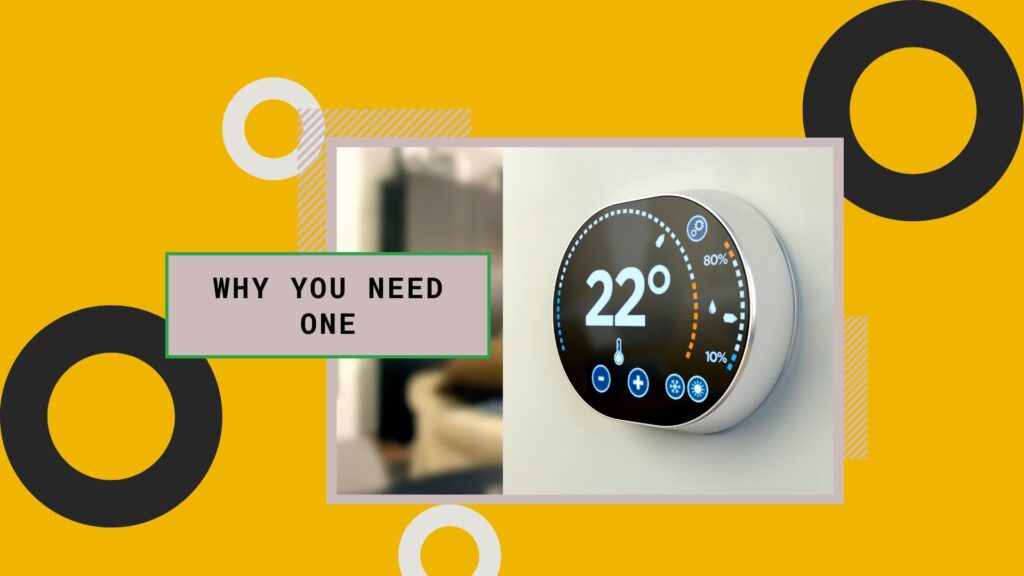
A smart thermostat is a valuable upgrade for any home offering energy saving amenities plus ease of use when it comes to integrating into other systems in the house too. It learns your routines adjusting temperatures accordingly while giving remote access meaning comfort without wasting energy. Best for reducing bills and increasing efficiencies at home.
What is a Smart Thermostat ?
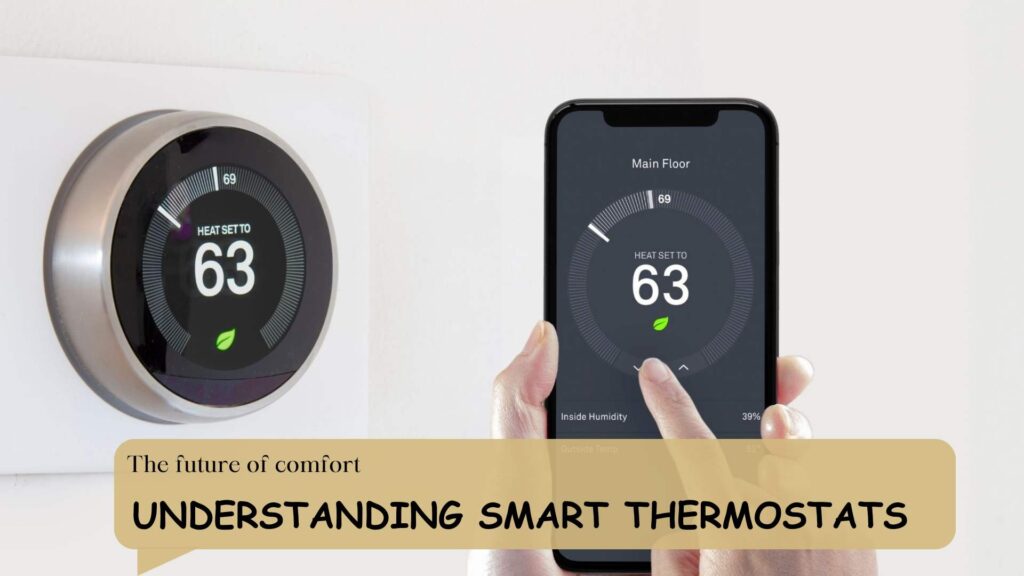
A clever thermostat can be used in the automation of your home’s heating and cooling process through the use of Wi-Fi. What is a smart thermostat? It is capable of learning your preferences, monitoring your schedule and optimizing climate for comfort and energy savings without any manual adjustment.
How Smart Thermostats Work
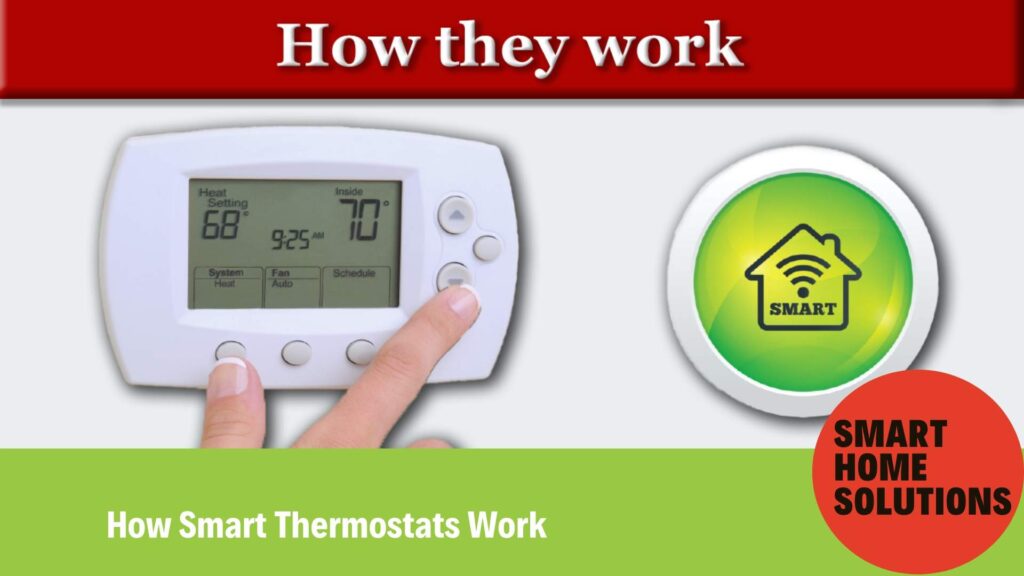
The technology behind smart thermostats involves several key components that work together to manage your home’s climate effectively:
- How do smart thermostats work? :They use sensors and Wi-Fi connectivity to learn your preferences and automatically adjust the temperature, offering both convenience and energy savings.
- Learning Algorithms : These algorithms scrutinize your daily activities; learn about your preferred temperature levels and selectively adjust for utmost ease and economy.
- Sensors : In possession of temperature and occupancy sensors; smart thermostats with sensors are capable of detecting when you are around or not. Thus they save energy by adjusting the temperatures whenever there are no occupants.
- Geofencing : Geofencing uses the GPS on your mobile device to detect when you leave or arrive at home so as to change its temperature to ensure a comfortable living space at arrival.
- Energy Monitoring: The purpose of smart thermostats is energy tracking which enables an individual to notice their consumption pattern thus minimizing usage that eventually reduces utility bills.
Top Benefits of Using a Smart Thermostat
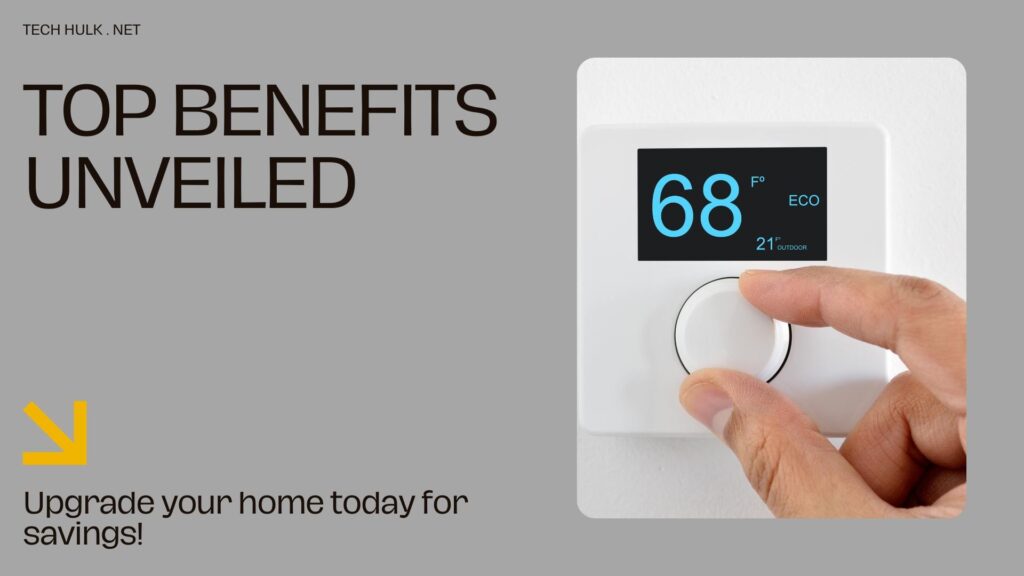
Smart thermostats have plenty of benefits that improve the efficiency, convenience and affordability in your home. Here is a brief look at the main advantages:
Energy Efficiency and Savings
The smart thermostat is energy saving because it traces your normal activities and adjusts temperature when you are not at home or during the night. Households can benefit from this operational efficiency that cuts their heating and cooling costs by 10-15%.
Remote Access and Control
With a smartphone app, you can control the climate of your home from anywhere. This helps to avoid wastage by being able to adjust temperatures, set schedules or turn off the system from remote places while still ensuring that it is comfortable. smart thermostats with remote sensors further enhance this convenience by providing precise temperature control in different areas of your home.
Smart Home Integration
These devices seamlessly blend with other smart home products like Alexa or Google Assistant thus making it possible for you to create an automatic routine that optimizes energy use while at the same time making sure that life is made easier.
Enhanced Comfort and Customization
Smart thermostats learn what temperatures suit you best so they will modify them accordingly. Some models have control systems per room hence ensuring every room in your house is comfortable.
Environmental Impact
Smart thermostats not only optimize energy consumption; they also help reduce your carbon footprint. They give energy usage reports which contribute towards more sustainable choices and a healthier planet.
Key Features to Look for in a Smart Thermostat
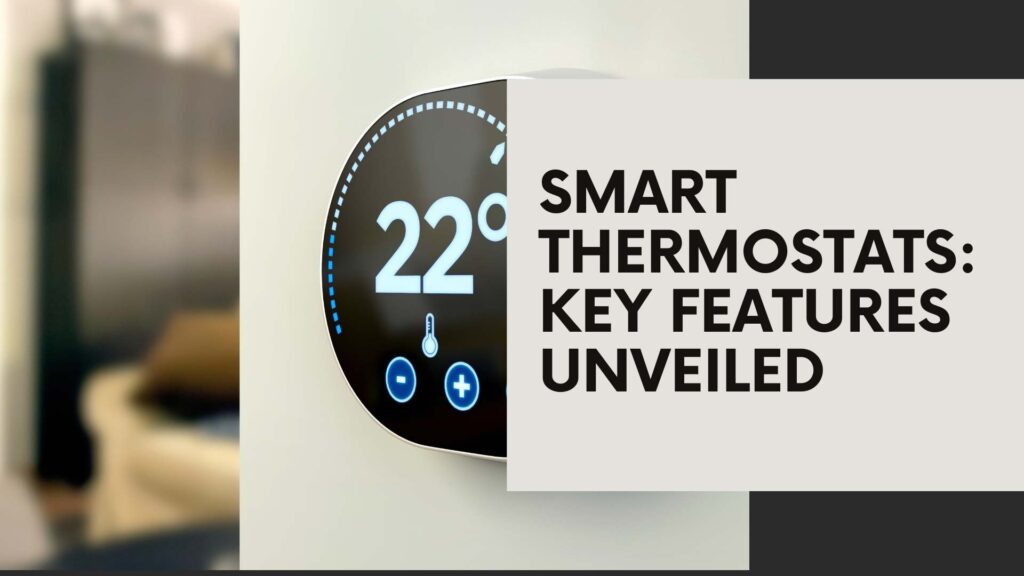
When selecting a smart thermostat, consider these essential features to enhance your experience and ensure compatibility with your home:
- HVAC Compatibility: Make sure that it works with high voltage as well as low voltage HVAC systems you have currently installed; else installation problems could emerge out of this issue.
- User-friendly Interface: When looking out for a thermostat, find one with a user interface that is easy to use and understand with clear displays and uncomplicated menus so as to avoid any complications.
- Voice Control Integration: Go for the model which can be interfaced with voice assistants like Amazon Echo, Google Assistant or Siri in order to enable you control it without using hands.
- Custom Scheduling: Look for a thermostat that can alter the temperature in the house automatically based on your daily schedule.
- Smart Home Ecosystem Compatibility: Be sure you can integrate your current smart home devices with the thermostat in order to create one uniform automated environment.
- Energy Monitoring: Seek out energy monitoring tools which provide information on power usage in real-time along with detailed reports helping save on utility payments for you.
Top Smart Thermostats of 2024
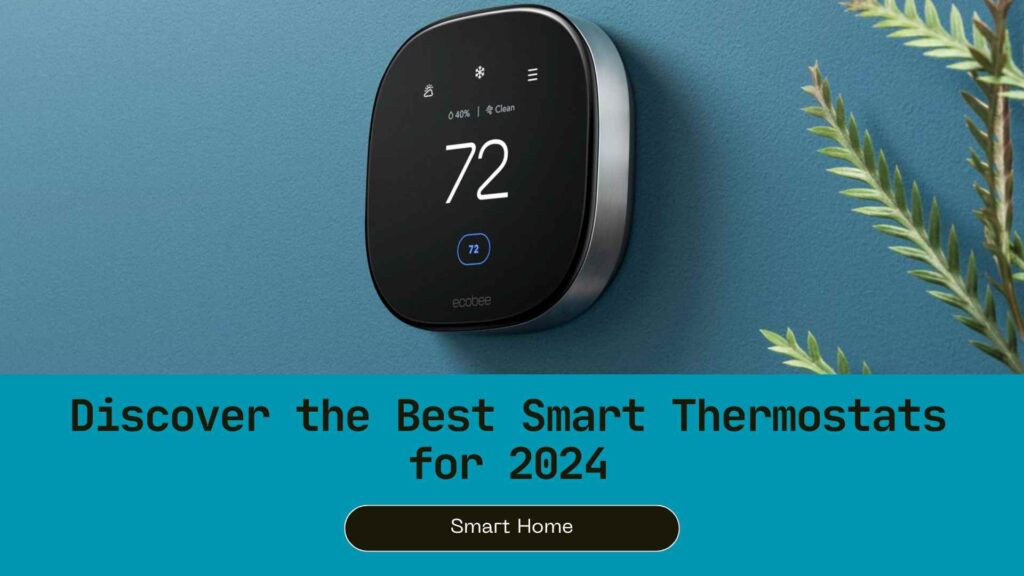
To select the most appropriate intelligent thermostat for your house, consider the following factors: energy efficiency, ease of use, smart home integration and total value. The Comprehensive Guide to Smart Thermostats highlights some of the top-rated smart thermostats in 2024 that have unique features enhancing home comfort including thermostat with sensors for precise temperature control, are:
Google Nest Learning Thermostat
The Google Nest Learning Thermostat is highly recommended because it adjusts its settings according to the way you live, reducing energy wastage without any manual involvement. While it is rather expensive, its attractive design together with comprehensive energy reports is worth considering.
Ecobee Smart Thermostat with Voice Control
The Ecobee Smart Thermostat, with its built-in Alexa, provides hands-free control and balanced home temperature. Its remote sensors enable this feature. Although it’s designed to save a lot of energy, many will find its numerous features too much.
Honeywell Home T9
Honeywell Home T9 is the perfect choice for extremely big homes because it employs smart room sensors to manage temperatures in different areas. Honeywell thermostat with remote sensor can also integrate well with Alexa and Google Assistant though more sensors mean higher installation costs.
Emerson Sensi Touch
The Emerson Sensi Touch is a cheaply priced option that comes with essential smart features and smart alerts. But it doesn’t have the most stylish design among other models.
Amazon Smart Thermostat
Amazon Smart Thermostat is an inexpensive thermostat that combines cost-effectiveness with compatibility with Alexa and energy savings. However, it lacks certain advanced features such as learning algorithms and remote sensors.
How to Install a Smart Thermostat: A Quick Guide

Installing a smart thermostat is a straightforward DIY task, but attention to detail is key for a smooth installation. Here’s a concise guide to get your new thermostat up and running:
Preparation and Safety
- Turn Off Power: Shut off power to your HVAC system at the circuit breaker to prevent electrical shocks.
- Review Instructions: Read the manufacturer’s installation guide for any specific requirements.
- Gather Tools: Have a screwdriver, wire labels, and possibly a drill on hand. Most smart thermostats come with an installation kit.
Step-by-Step Installation
Remove the Old Thermostat
- Remove the cover to expose the wiring.
- Label each wire or take a photo of the current setup.
- Unscrew and remove the old thermostat’s base plate.
Install the New Base Plate
- Position and level the new base plate, then secure it to the wall.
- Feed the wires through the base plate’s opening.
Connect the Wires
- Attach each wire to the corresponding terminal on the new thermostat base, using the labels or photo for reference.
- Ensure each wire is firmly connected.
Attach the Thermostat Display
- Snap the thermostat display onto the base plate, ensuring it clicks into place.
Restore Power and Configure
- Turn the power back on at the circuit breaker.
Follow the on-screen setup instructions to connect to Wi-Fi, set preferences, and integrate with any smart home systems.
Test the System
- Adjust the temperature to ensure your HVAC system responds correctly and the thermostat functions as expected.
- With these steps, your smart thermostat should be ready to optimize your home’s climate control.
Common Installation Challenges

Even though installing a smart thermostat is relatively simple, you may encounter a few challenges:
To achieve this goal fully and address all of these issues will enable you to successfully install your smart thermostat including a smart temperature controller which will make it possible for you to enjoy automatic temperature control at your home while reducing your electricity bills. In addition to these , there are other problems. So this means if there is anything else that differs from those common cases,you better consult the manufacturer or get help from an expert .
- To sum up, the future of smart door lock technology is bright, driven by increased demand for convenient and secure home access resolutions. As advancements persist to improve technology and enhance security measures, smart door locks are becoming an integral part of modern homes.
- C-Wire Requirement: There are certain types of smart thermostats that may need a common wire (C-wire) for constant power supply. You might require an adapter or professional assistance if your current system does not have a C-wire.
- Compatibility Issues: See to it that your HVAC system can work together with selected smart thermostat models. Incompatible systems may need extra adapters or a different thermostat model altogether.
- Wi-Fi Connectivity: should your thermostat fail to connect to your Wi-Fi network, moving the router closer or employing a wi-fi extender can improve on this.
Conclusion
There is no better way to improve your indoor environment’s comfort levels while at the same time reducing your power bills and conserving the environment than installing a smart thermostat. Our extensive guide has shown that smart thermostats have many advantages such as learning from your daily routines, allowing for remote access and being compatible with other devices connected in your house.
Whether driven by a need to reduce energy use or add convenience, every home deserves a smart thermostat. Staying ahead of technology advancement is also key. Therefore, with features like cutting-edge algorithms for learning, these devices excel. They also have electricity monitoring capabilities. Additionally, they are compatible with various smart items around the residence. You become empowered by these new gadgets. They allow you to fully take charge over climate changes in your home.
FAQs
Yes, smart thermostats are worth it. They can reduce heating and cooling costs by 10-15%, leading to significant savings over time.
Most smart thermostats are DIY-friendly with clear instructions. However, if you’re unsure about wiring, it’s best to hire a professional .
Not all smart thermostats are compatible with every HVAC system. Check compatibility with your system before purchasing.
You can save 10-15% on energy bills with a smart thermostat, potentially saving $100-$150 annually.
Yes, Wi-Fi is needed for remote control, smart features, and updates. Without it, you’ll lose key functionalities.

